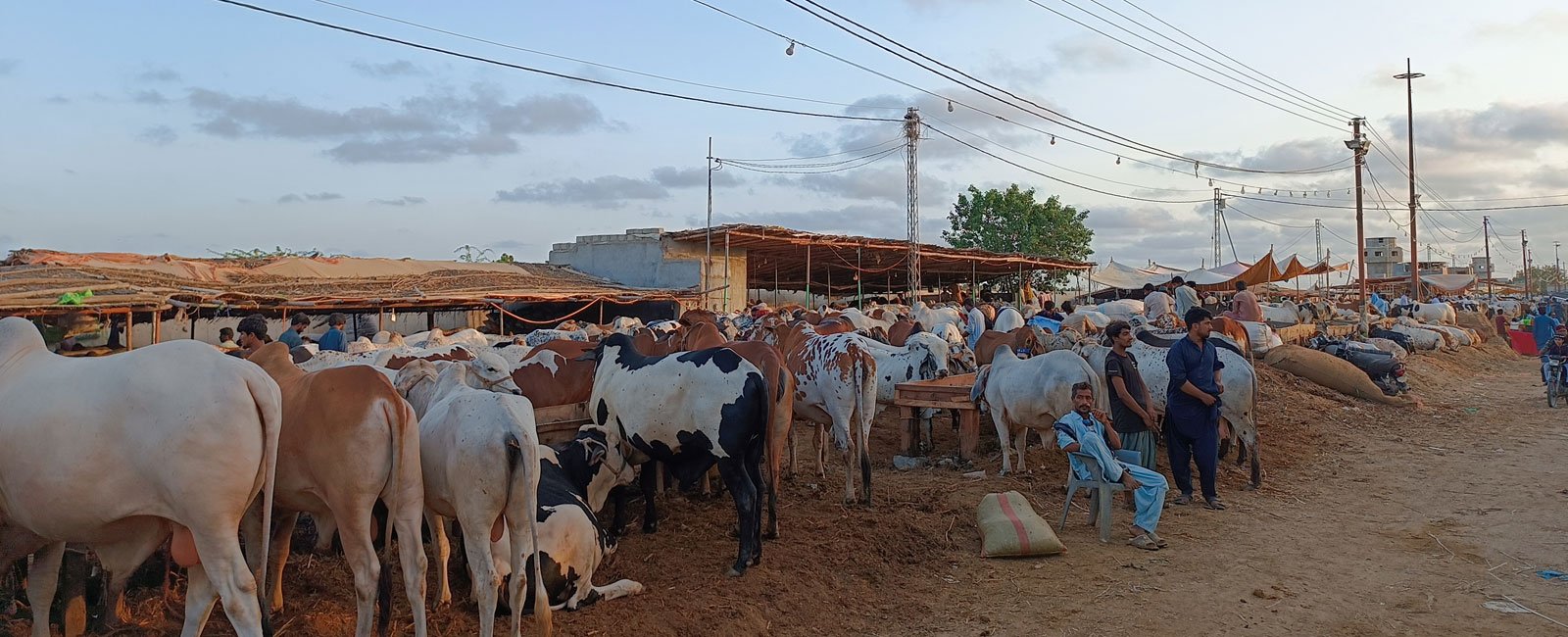Eid ul Adha: Let's meet some Bullzillas and Cow Kongs in Karachi
Geo.tv visited some Maweshi Mandis and came across some exceptional sacrificial animals in terms of size, weight, and breed

Muslims worldwide celebrate Eid ul Adha on the 10th of Zul Hujj, the last of the 12 months of the Islamic calendar. As Eid month approaches, enthusiasm among believers to purchase the best sacrificial animals, according to their affordability, reaches a feverish pitch in Pakistan.
We can moo and baa about this festive atmosphere — when the whole city is taken over by sacrificial ovines and bovines in the run-up to the big day, being proudly paraded by children and adults alike everywhere — until the cows come home.
Livestock farmers rear animals with care that rivals raising children. The breeders nurse these stock products until they reach sacrificial age. Then they haul the fatted bulls and heifers on trucks and vans from their far-off towns to cities to trade them in makeshift cattle markets called Maweshi Mandis ahead of Eid ul Adha.
These breeders are master salespersons and know when to cut a deal and when to tie it up. They never run losses. These seasoned merchants have the constitution of an ox and don't listen to anyone until they don't want to.
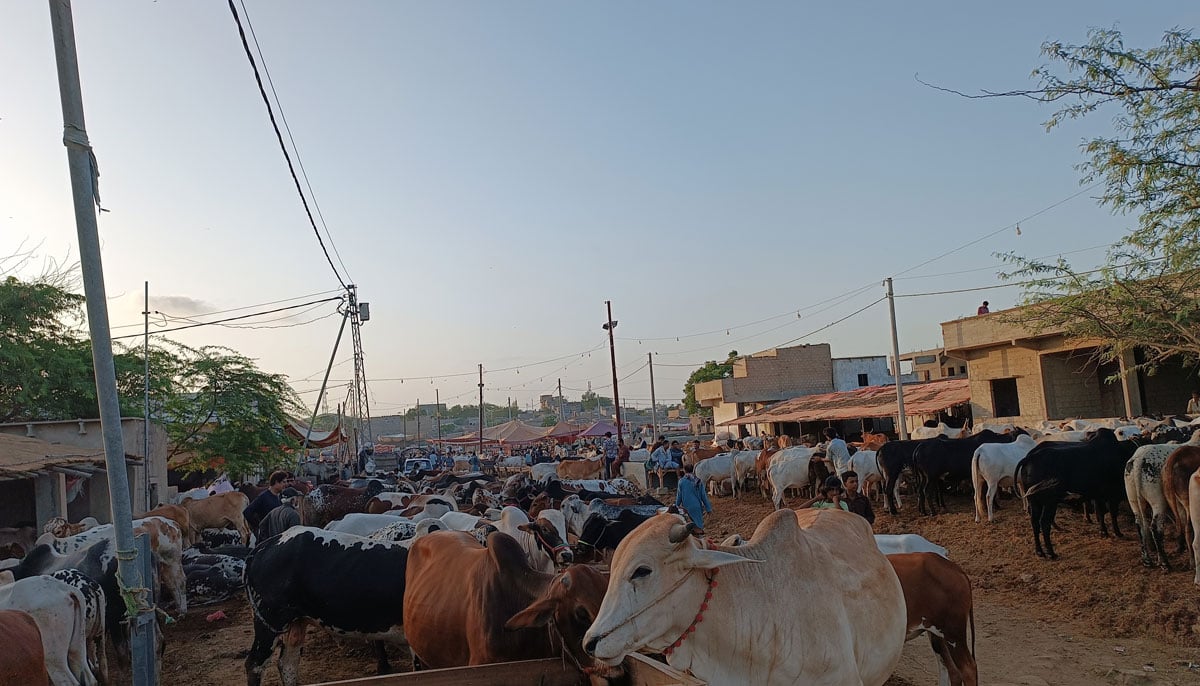
Geo.tv visited these Mandis and came across different exceptional animals in terms of size, weight, and breed.
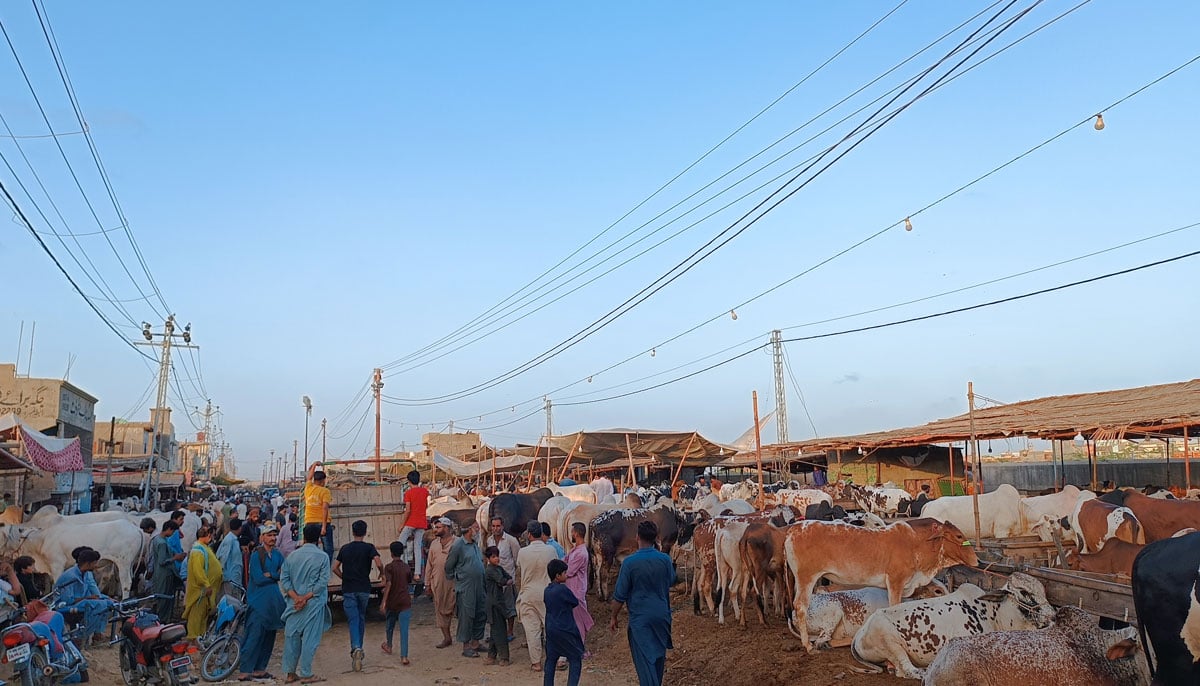
Among them was a heifer, bred in a way that may amaze some people. The owner, Nawaid, told Geo.tv that they started focusing on their animals' growth when they were just days old.
The red-coloured heifer weighs in at 35 to 37 maunds (37.32kgs), the owner proudly claimed.
He showed us four four-toothed heifers, i.e., one of them was a Brahman breed, while the other three were of Cholistan breed.
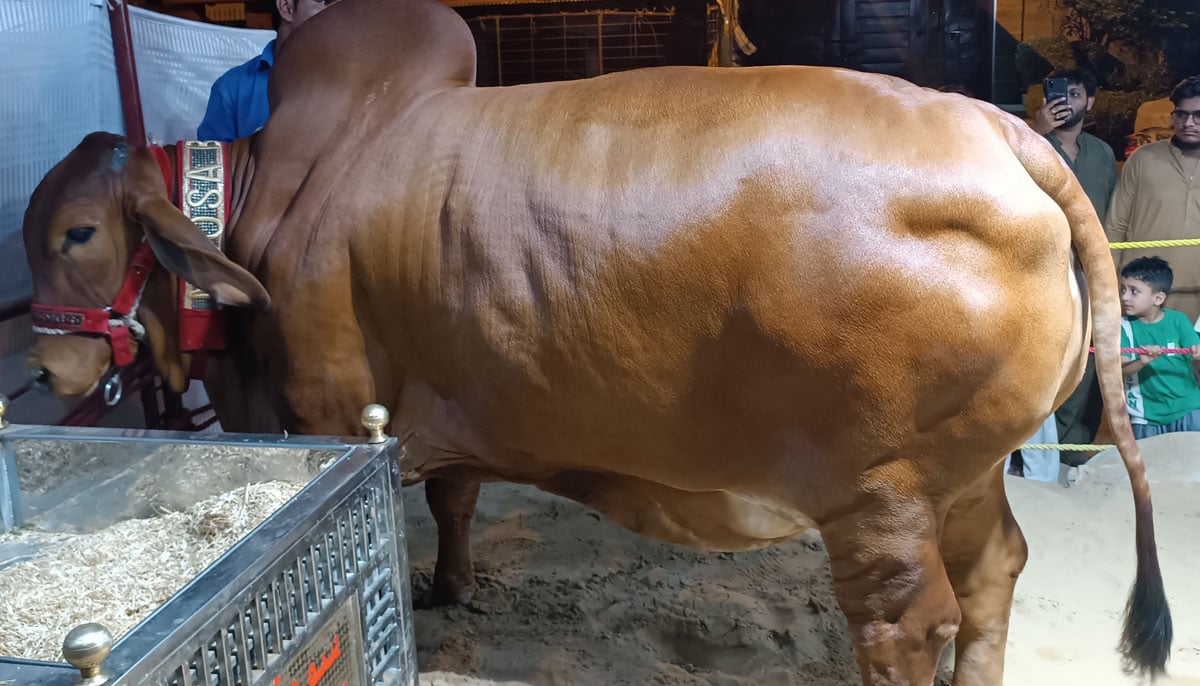
Nawaid said these animals are fed butter in summer, and desi ghee in winter alongside their normal daily fodder.
"These animals are regularly vaccinated and they also undergo health checkups for the examination of their digestive system and growth."
"Their stomachs are cleaned every three months to prevent any infection that could hamper their digestion," Nawaid said, adding that "they are also given corn in their diet and other desi mixtures."
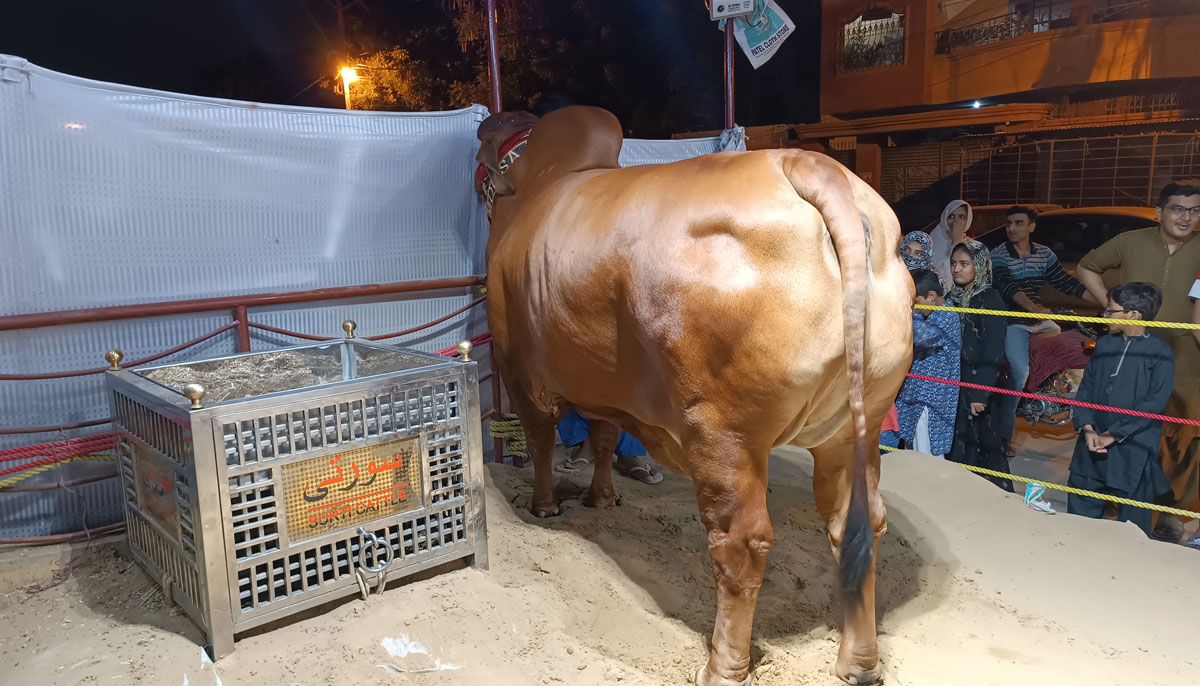
"We need to take very good care of their diet and always ensure that their fodder and water are fresh, clean, and hygienic. We take care of them as infants," Nawaid added, who did not disclose the expenditures of growing his sacrificial animals into meaty titans.
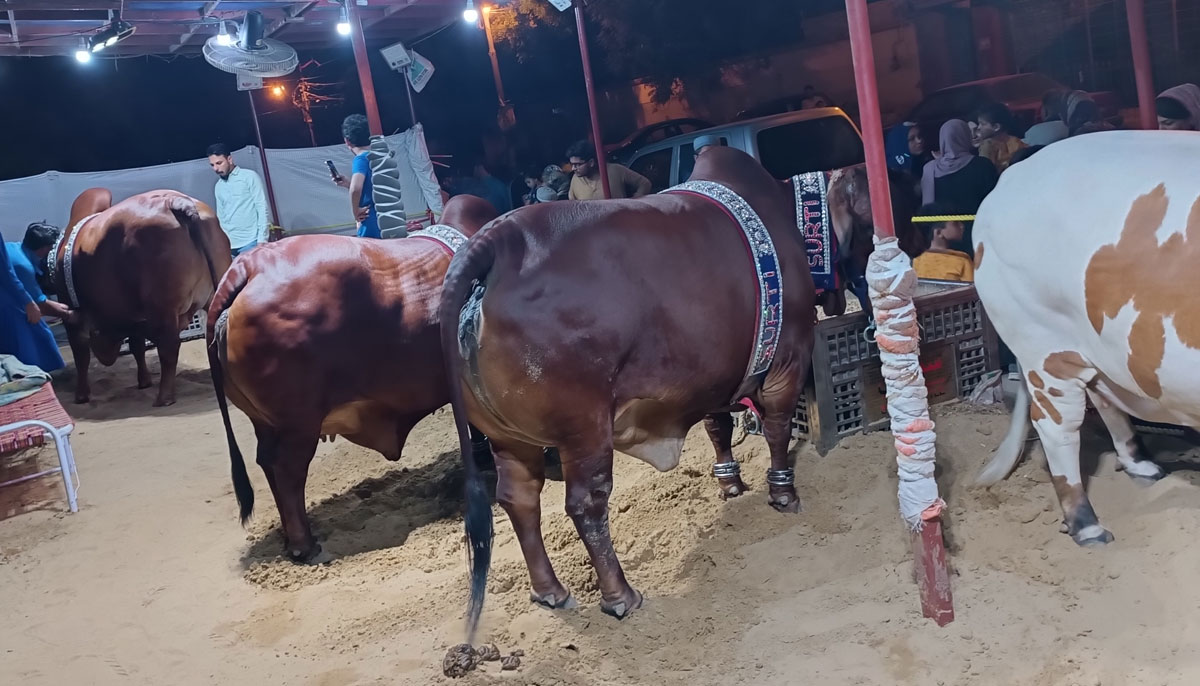
He went on to add: "We also monitor their digestion by examining their faeces as it tells us whether the food we gave them was right. This is how we administer their medications accordingly."
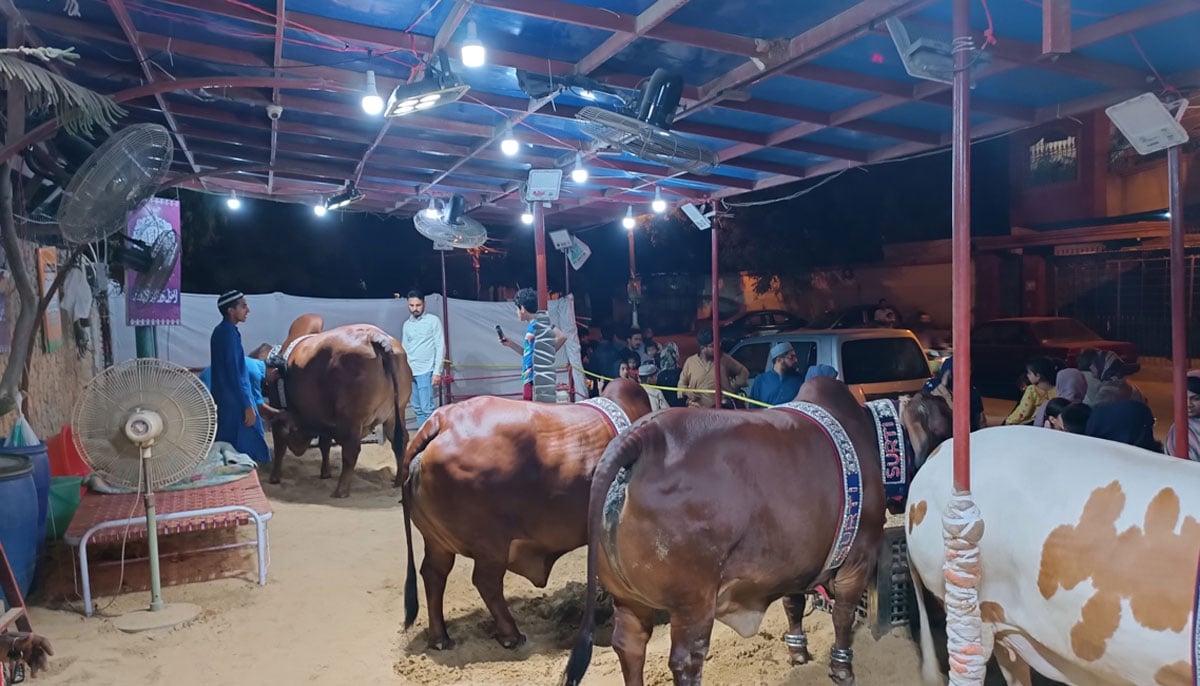
"This process takes around three years because the growth days of the animals are the first 24 months in which they grow their initial two teeth," he opined.
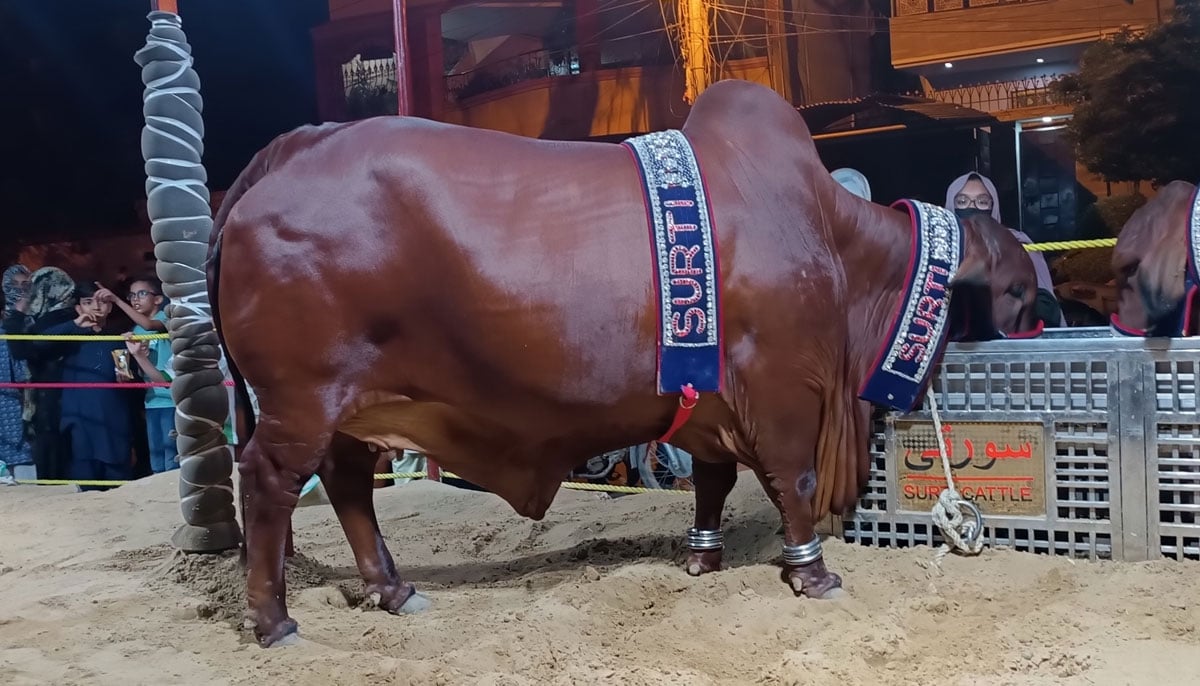
"When an animal has grown its eight teeth, it is completely ready to be slaughtered. But people think otherwise here. It is commonly believed that an animal with eight teeth is old. It’s wrong. These teeth grow when animals reach 4 years, half their complete adulthood age, 8 years."
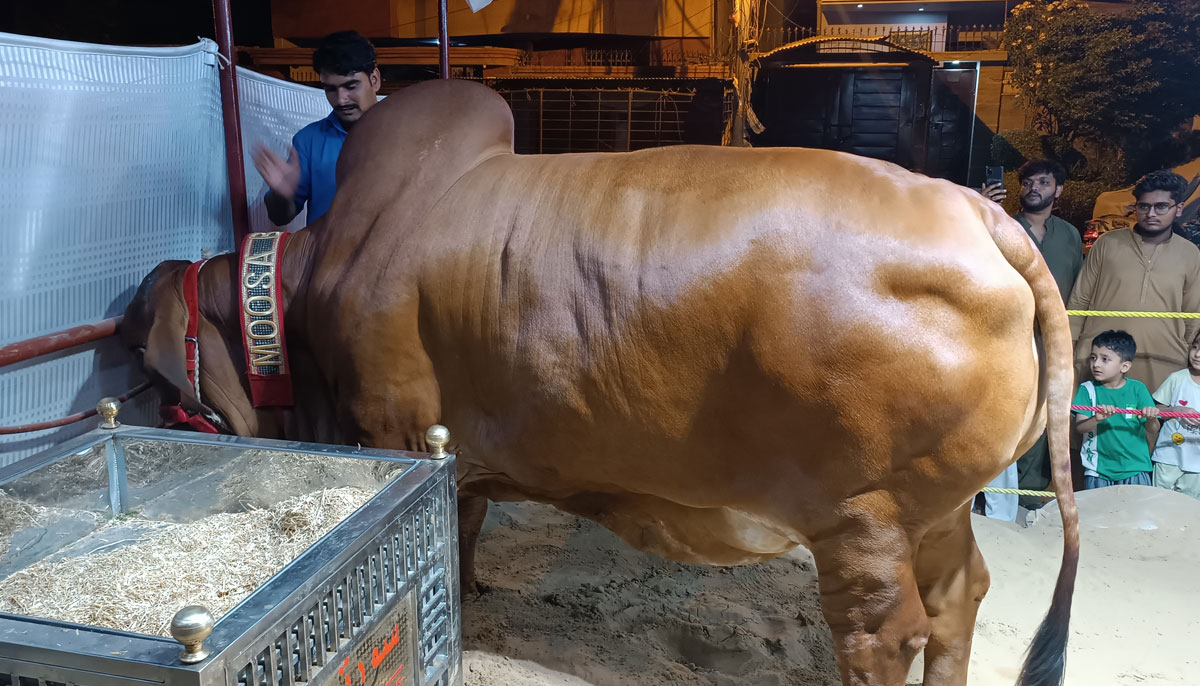
In Yousuf Goth Mandi, we also visited some cattle-selling spots featuring bulls and heifers different from the rest.
In one of the sheds, we met with a cattle trader Ali, who showed us some of their best animals up for sale. He explained to us in detail about their breeds.
While pointing toward a white bull, Ali said: "This one is a mix of Sahiwal and Sibbi breeds and weighs nearly 14 maunds or approximately 520 kgs."
"The price of this white goliath is 14 lac rupees for we have spent a fortune in growing him from a calf into a full-sized bull," Ali remarked.
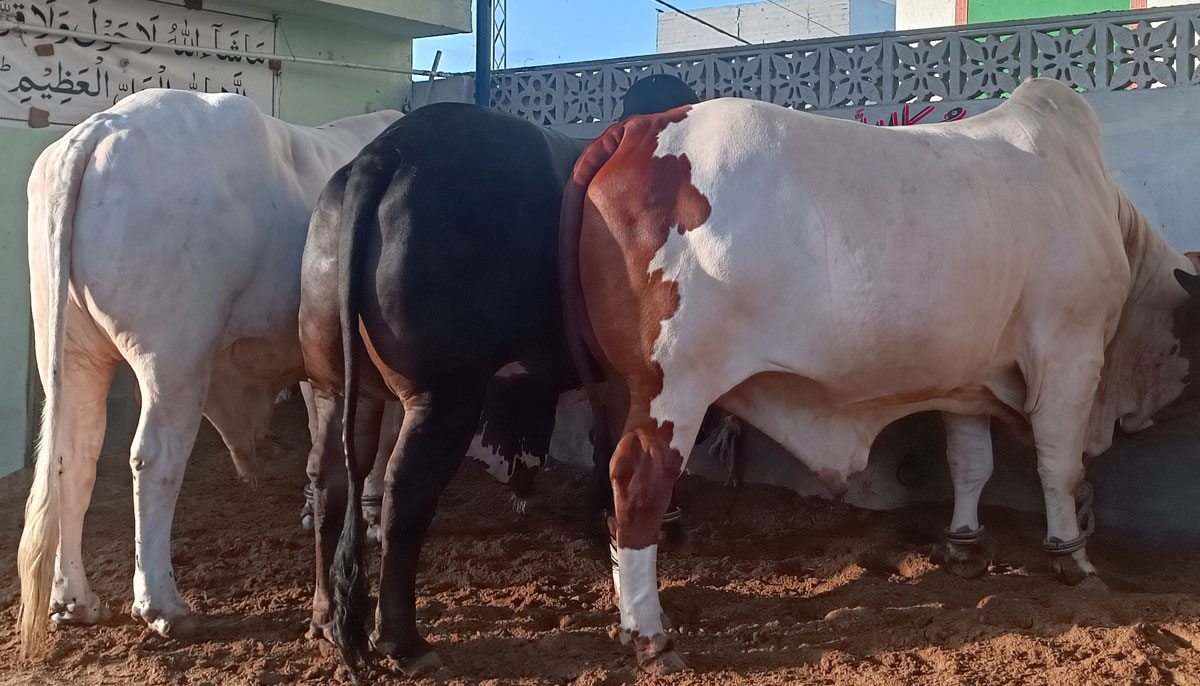
Sahiwal breed bulls are muscular, whereas Sibbi ones are very tall. These are both associated with the names of cities in Punjab and Balochistan, respectively.
Ali said the black one, also pictured above at the centre from the Cholistan race, weighed 480kgs, adding that it had a price tag of 12 lac rupees (Rs1.2 million).
"This is the expected weight of the meat not the whole animal alive."
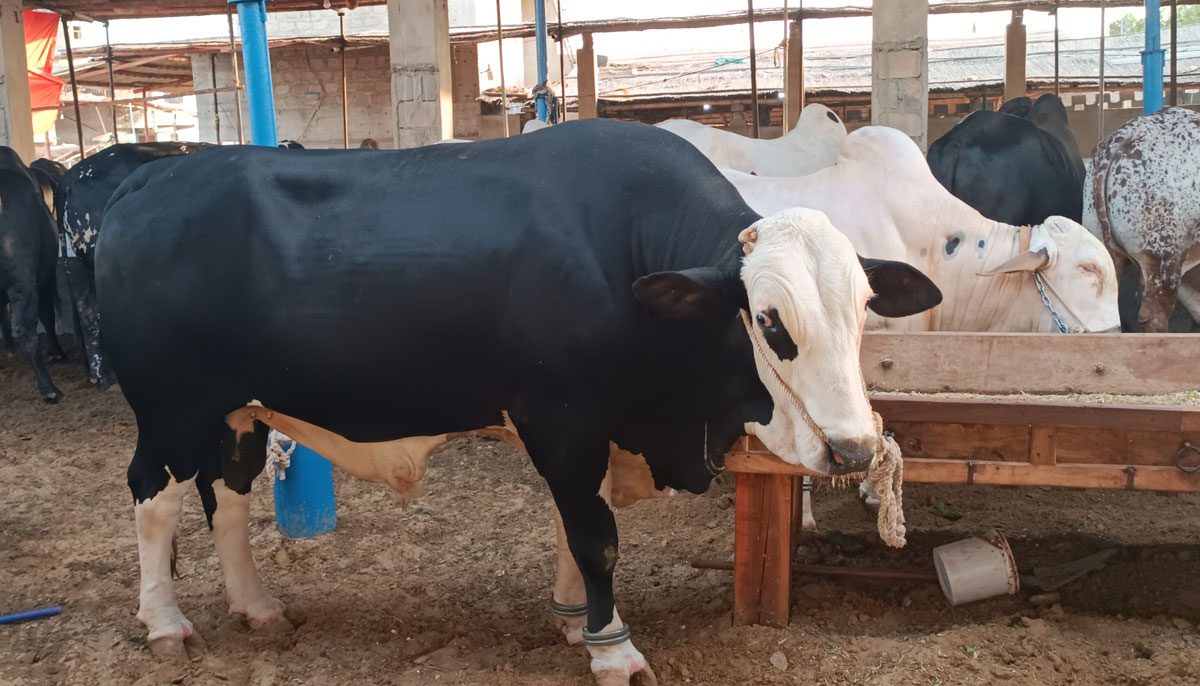
The live weight, he underscored, on average, would be more than 24 maunds for each bull.
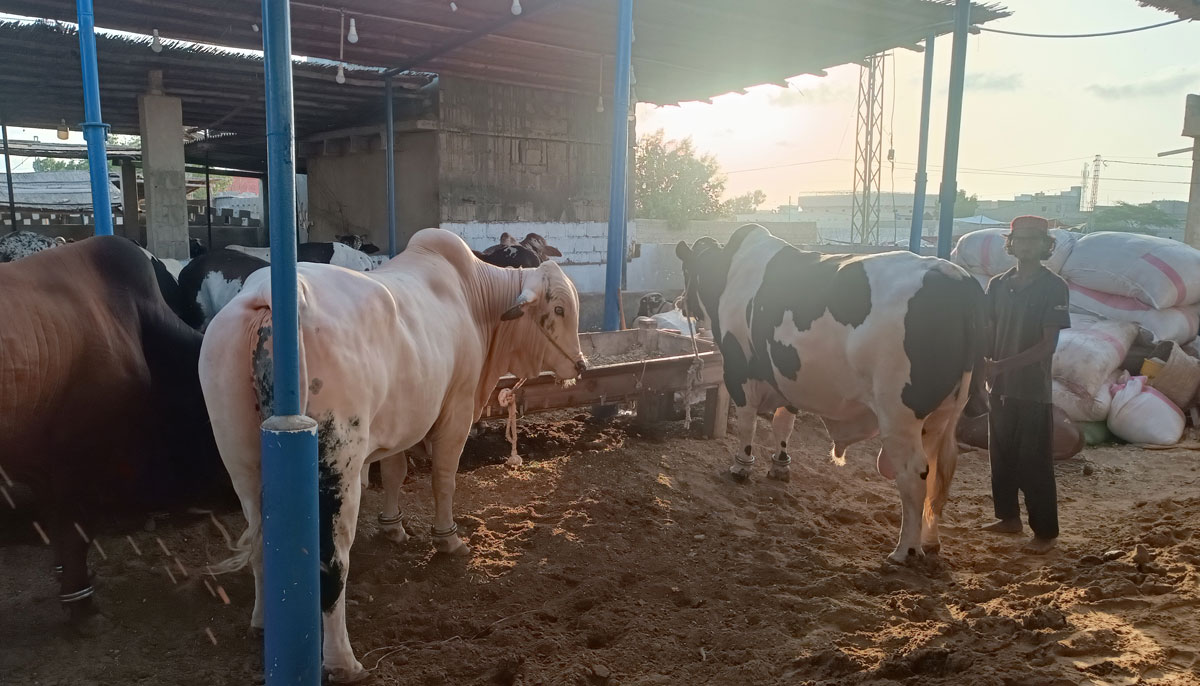
On the other side of his animal farm, he pointed towards a calf of the Brahman breed, which was heavyweight and tall as well.
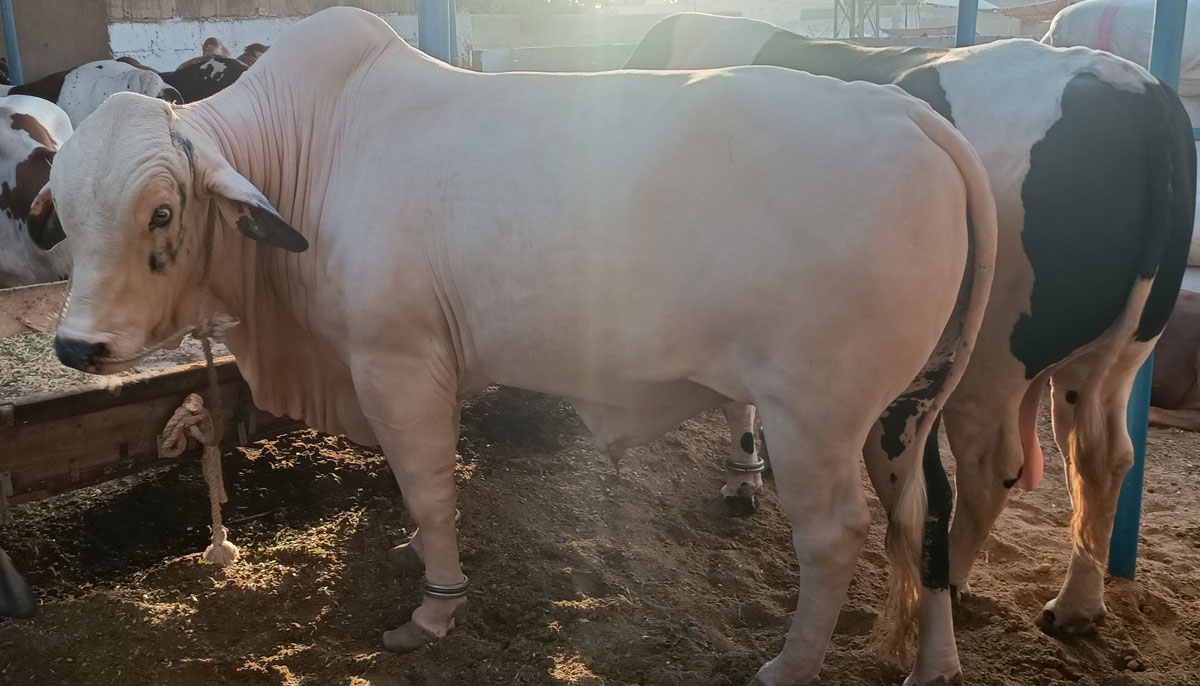
Ali said Brahman is a foreign breed that has come to Pakistan recently.
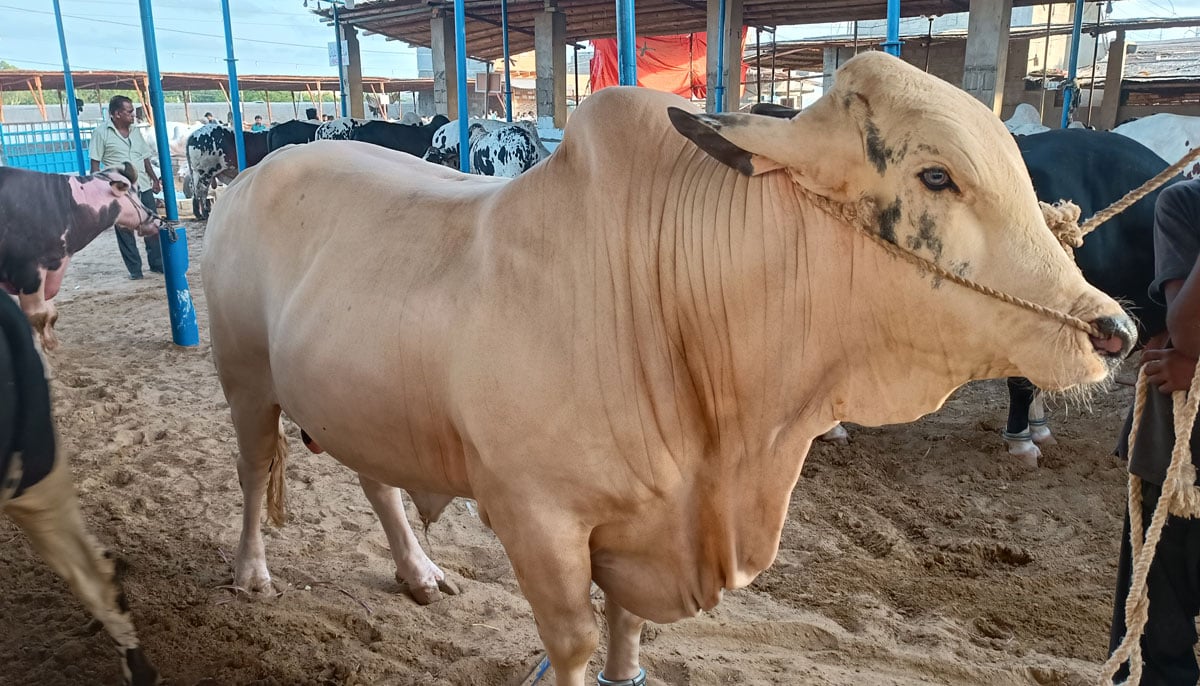
"The animals from this breed are also regarded as beef masters due to their height and weight," he said and added, "This is a four-toothed one."
Ali said: "He and other caretakers had nurtured all the animals under extreme care, preventing them from falling sick and losing weight at any point." According to his estimation, these animals eat eight kgs of fodder at a time.
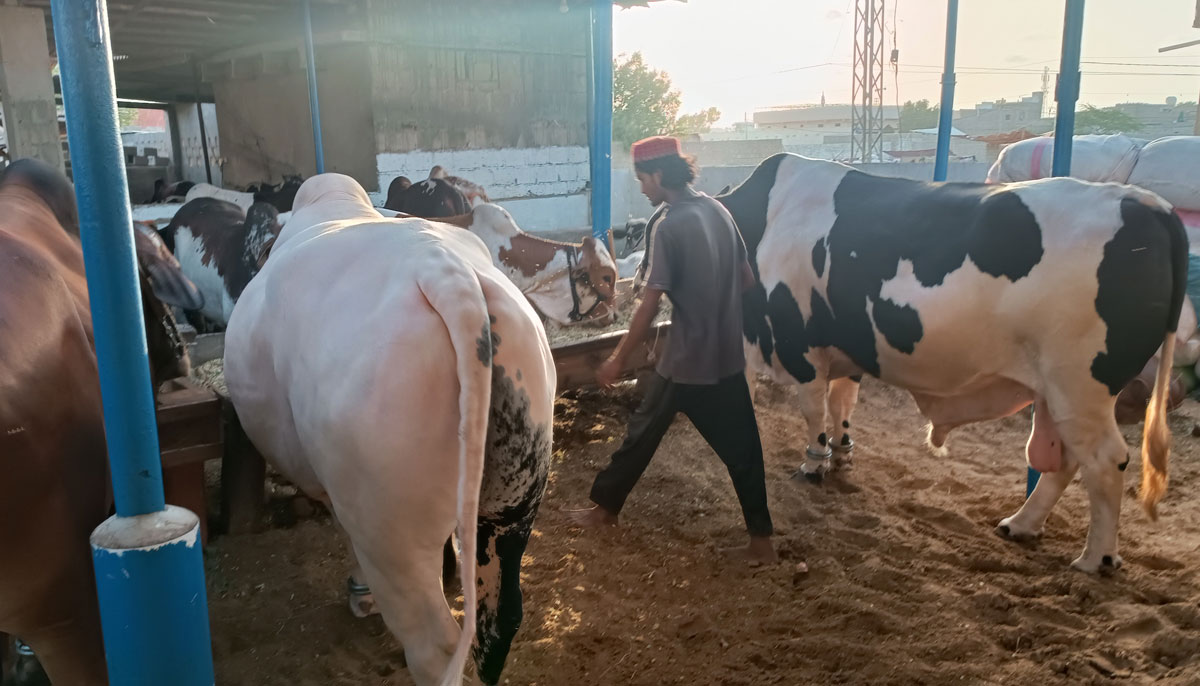
At a nearby farm in the same Mandi, there were three bulls from the Sibbi Balanari breed with an exceptional height above an average person. The caretaker, Fahad Hussain, said their bulls weighed around 20 maunds each.
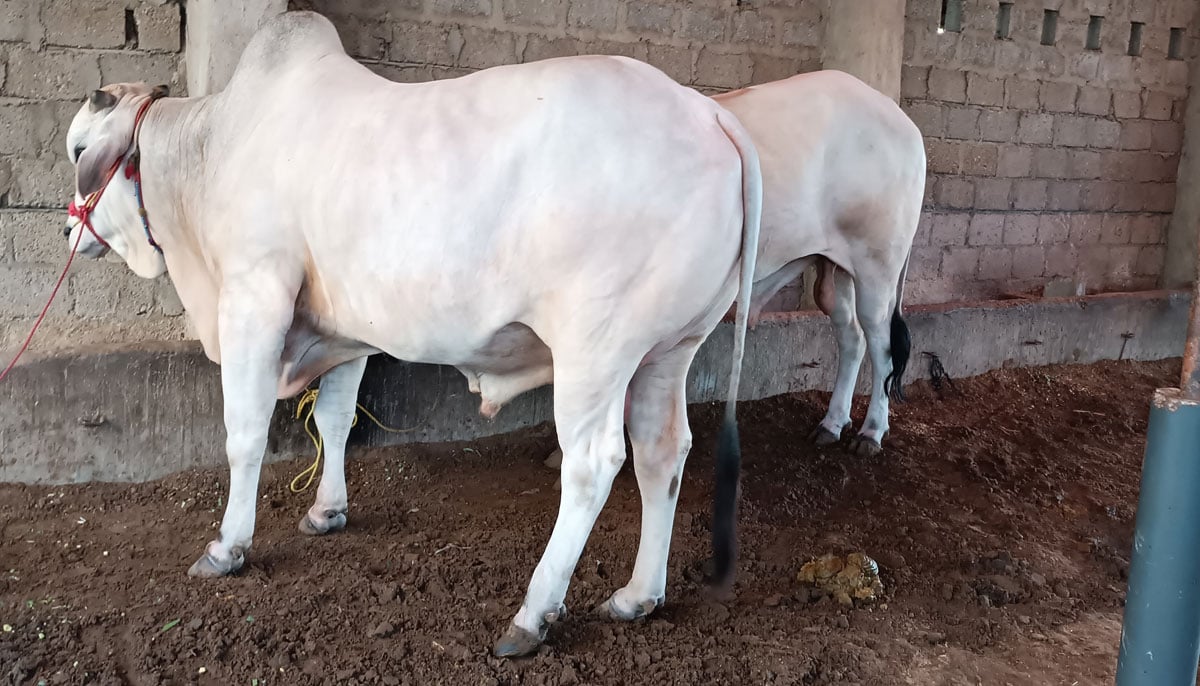
Hussain stated that his animals ate a specific kind of fodder, including porridge, mashed rice and flour, alongside a standard local diet.
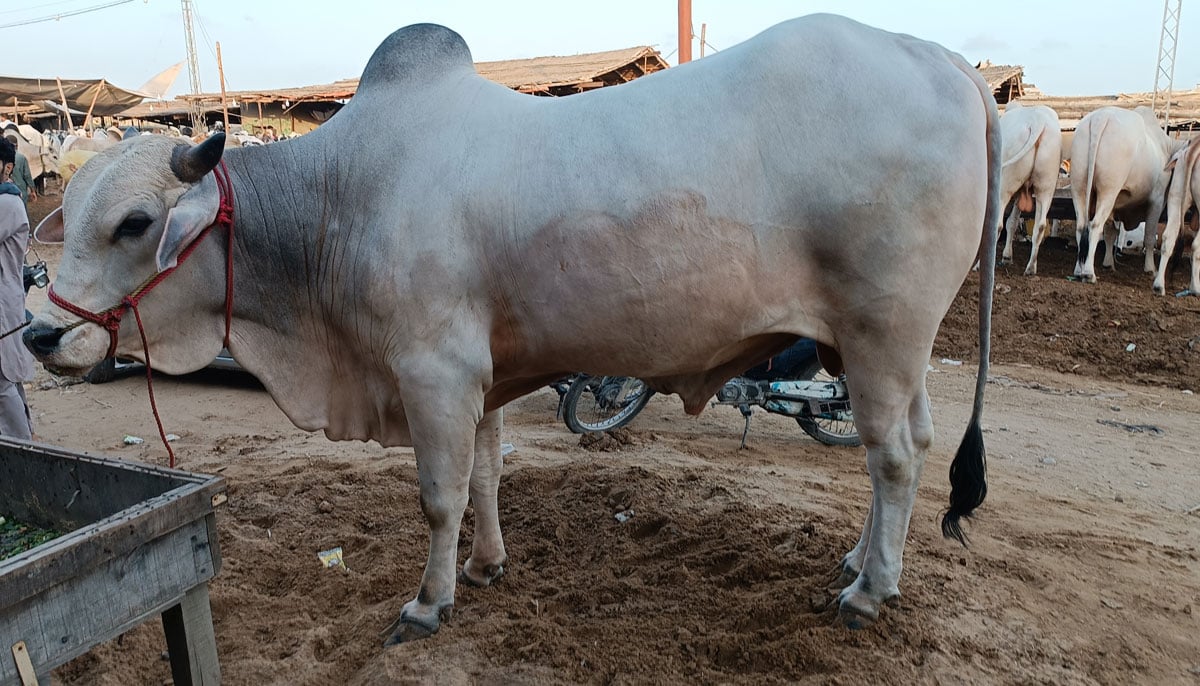
His set a very high price for these bulls at 22 lac rupees (Rs2.2 million), and 20 lac rupees (Rs2 million), which he said was not high because he had invested a lot of money in them.
In another bull shed, while looking for animals, we also encountered animals of other breeds.
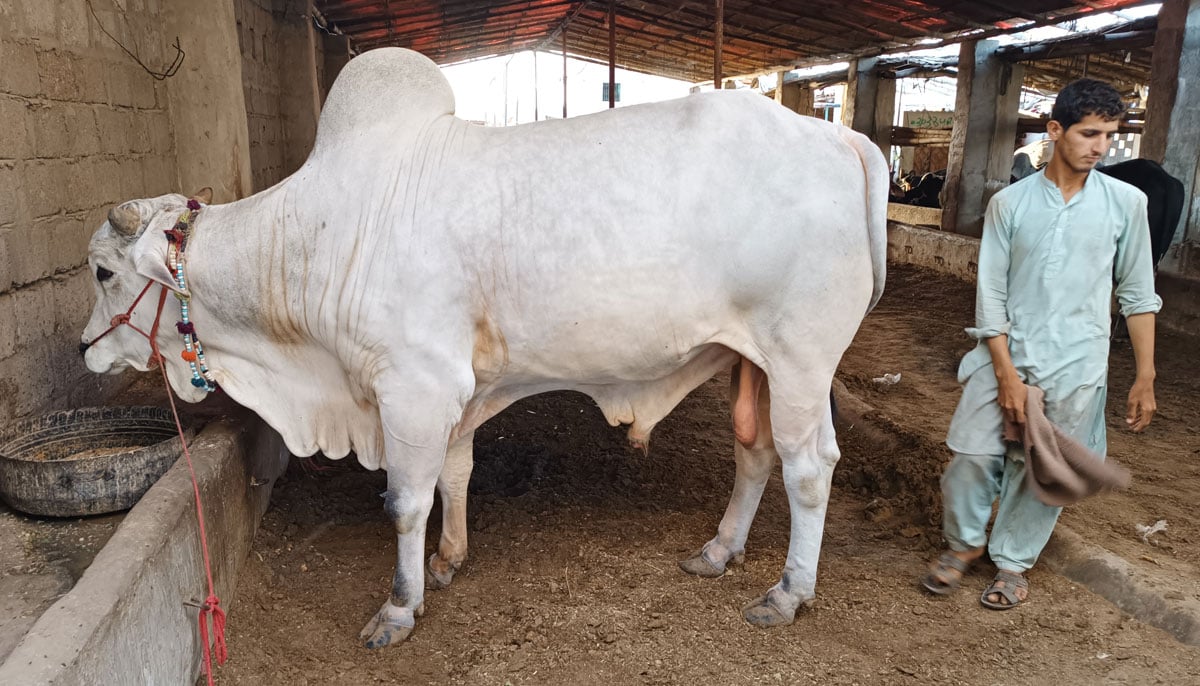
In one of the cattle sheds, we met Iftikhar Yousufzai, another cattle trader, who showed us some of his prized animals of Cholistan, Australian, and Sibbi breeds.
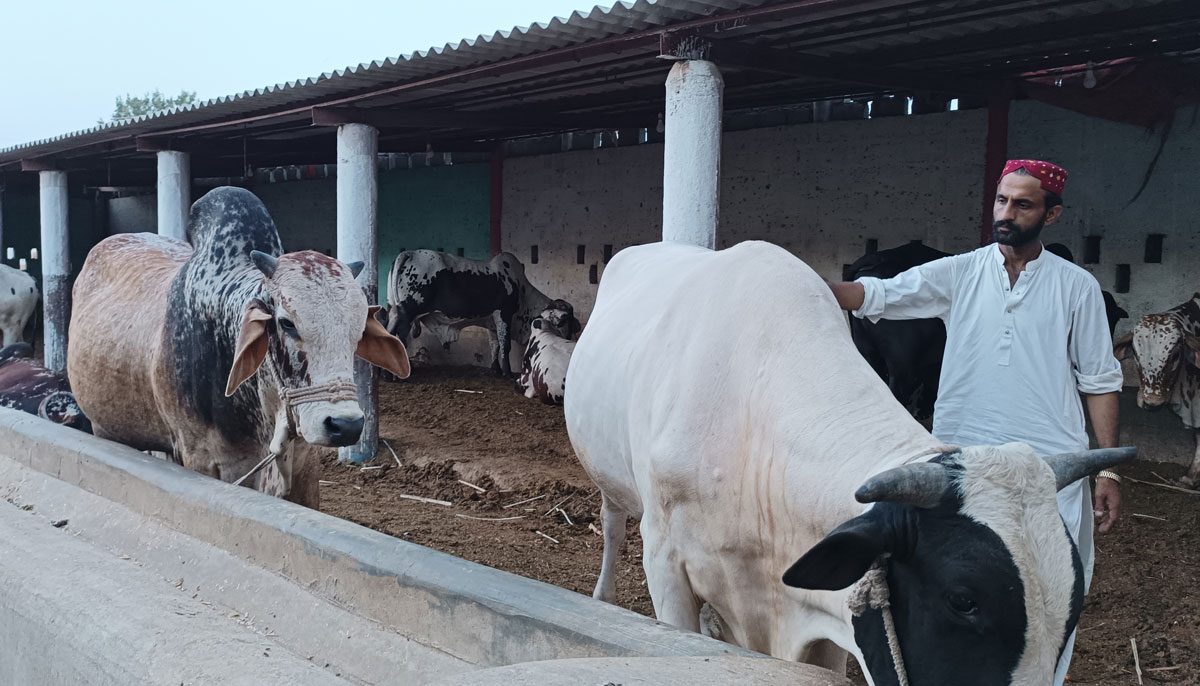
He said he personally takes care of them all and spends around 12 hours with the animals, adding that he "loves taking care of and watching them grow."
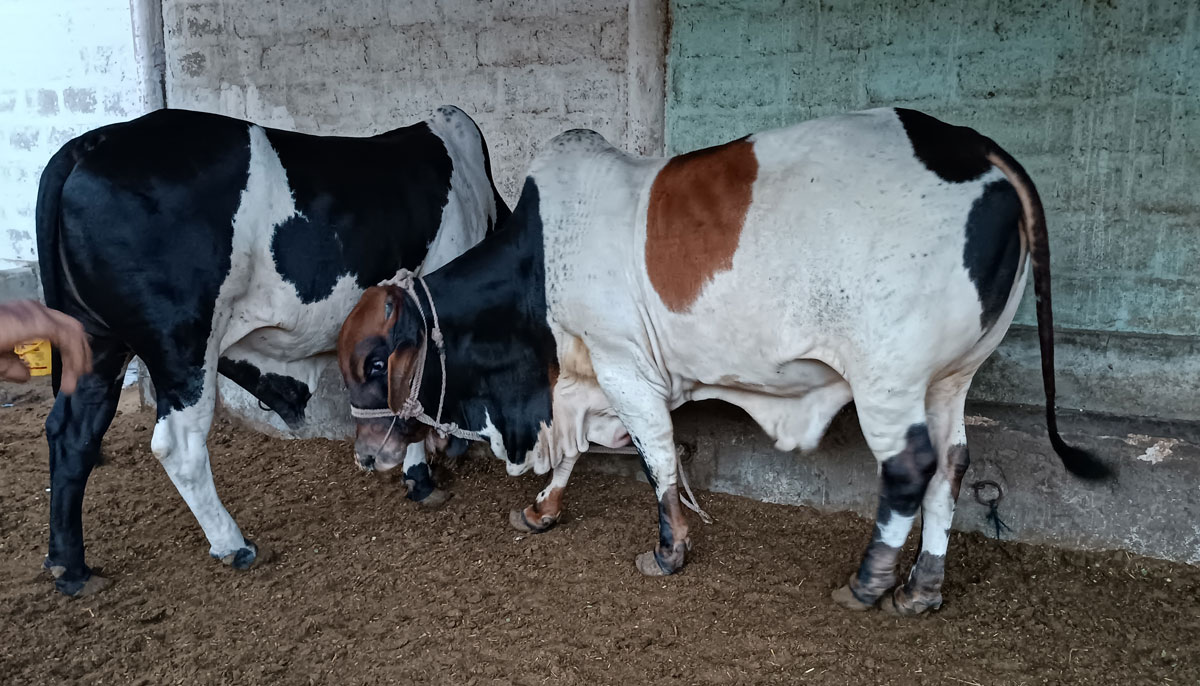
Yousufzai showed us two of his bulls, saying, "They eat more than 8 kgs of fodder daily and are all completely vaccinated."
" I myself prepare fodder for these called printed animals — because of the patches of different colours on their body — to ensure proper hygiene and their health."
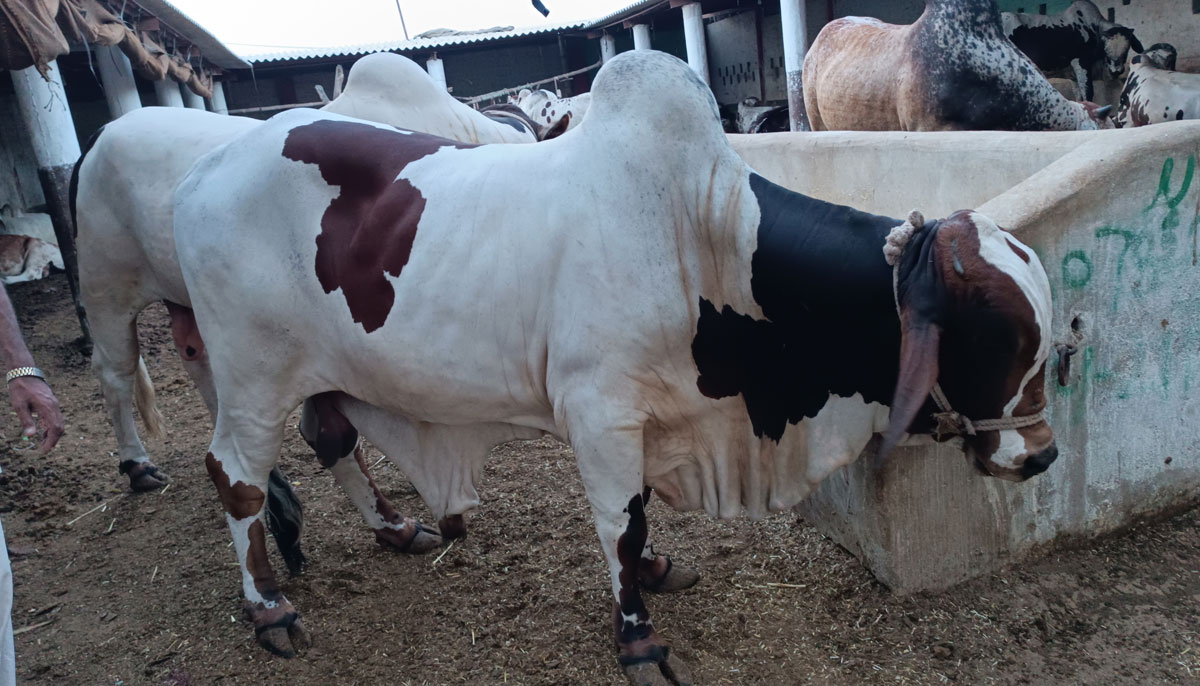
While citing inflation, Yousufzai noted that "there are fewer customers than last year. Now people just come, ask the price and move on, adding that "people should understand that we have also put a lot of our money into sacrificial animals, and that's why we are selling them at such dear prices."
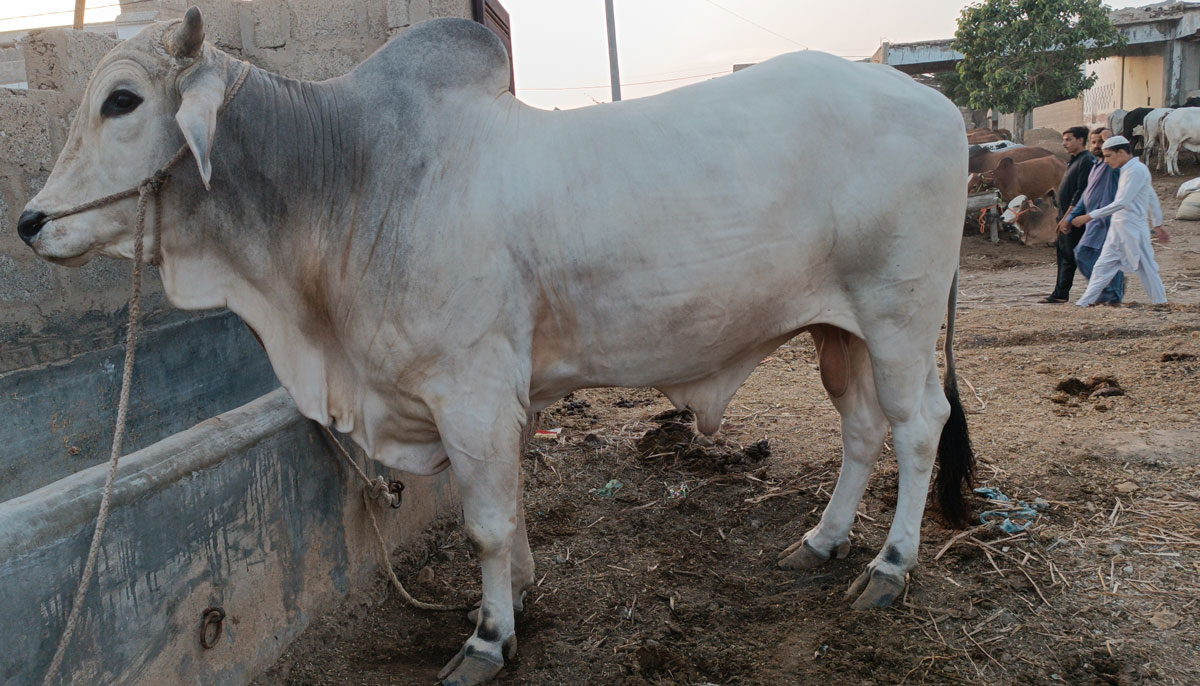
"The demand for our Cholistan breed animals ranges from 6 lac rupees (Rs600,000) to 8 lac rupees (Rs800,000), which is moderate compared to the current prices in the market," he emphasised. For Sibbi, the price for customers was 8 lac rupees (Rs800,000).
According to him, the meat weight of his animals ranges from 12 maunds to 14 maunds.
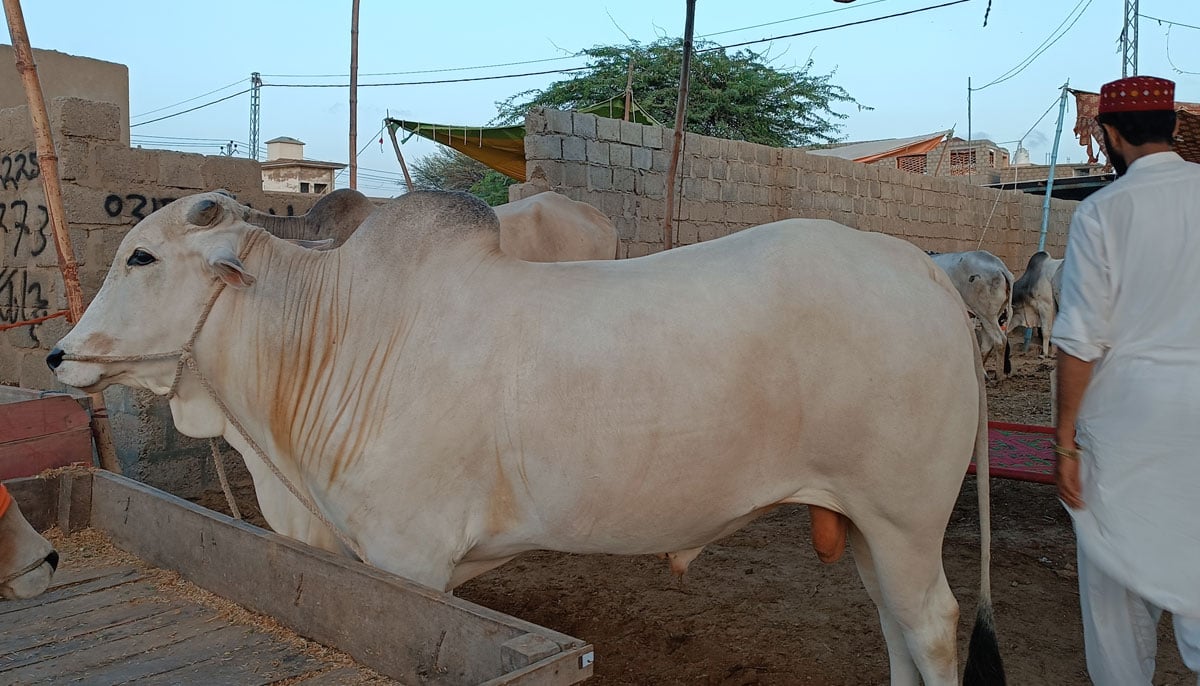
Explaining the market mechanism Yousafzai said: "The owners demand different prices when using a reference. When you randomly approach a seller and ask how much you are asking for it, they will tell you a much higher than the actual price leaving a margin or bargaining."
"But we do not do this because we are here for business. We never lose our customers and ensure they return to us next time," Yousufzai said.
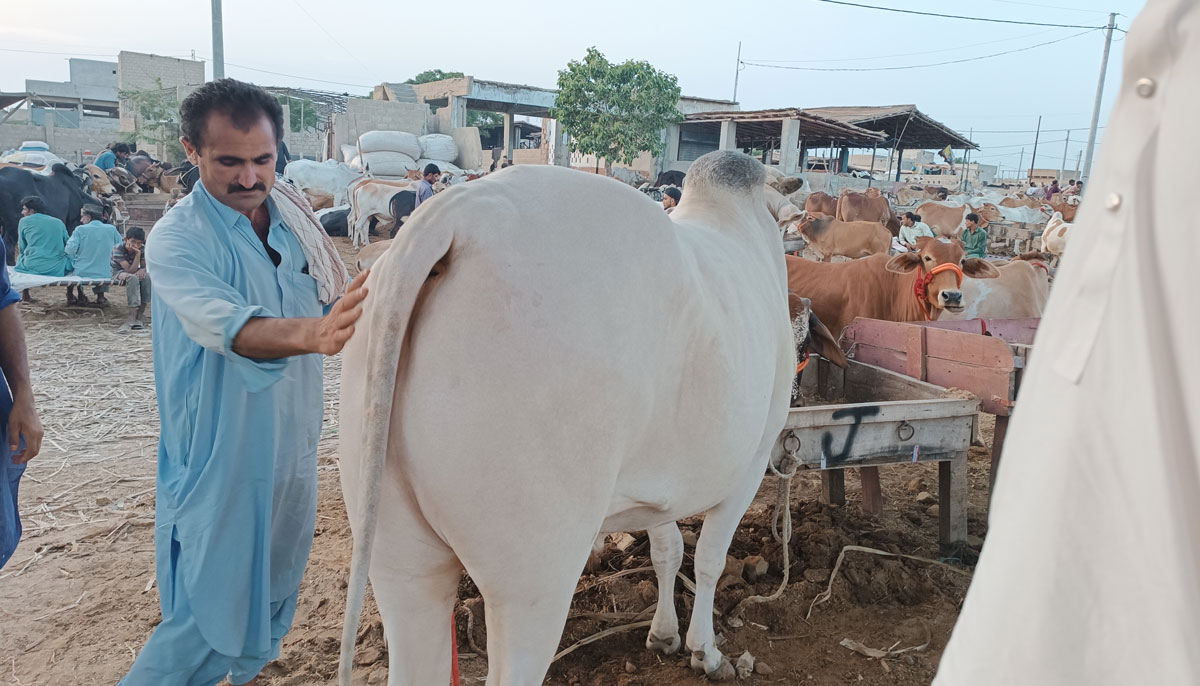
In another shed, Ajab Khan, a cow breeder, was also making his presence felt with his prodigious Australian-cross breed animals, with a demand of 13 to 15 lac rupees (Rs1.3 to 1.5 million).
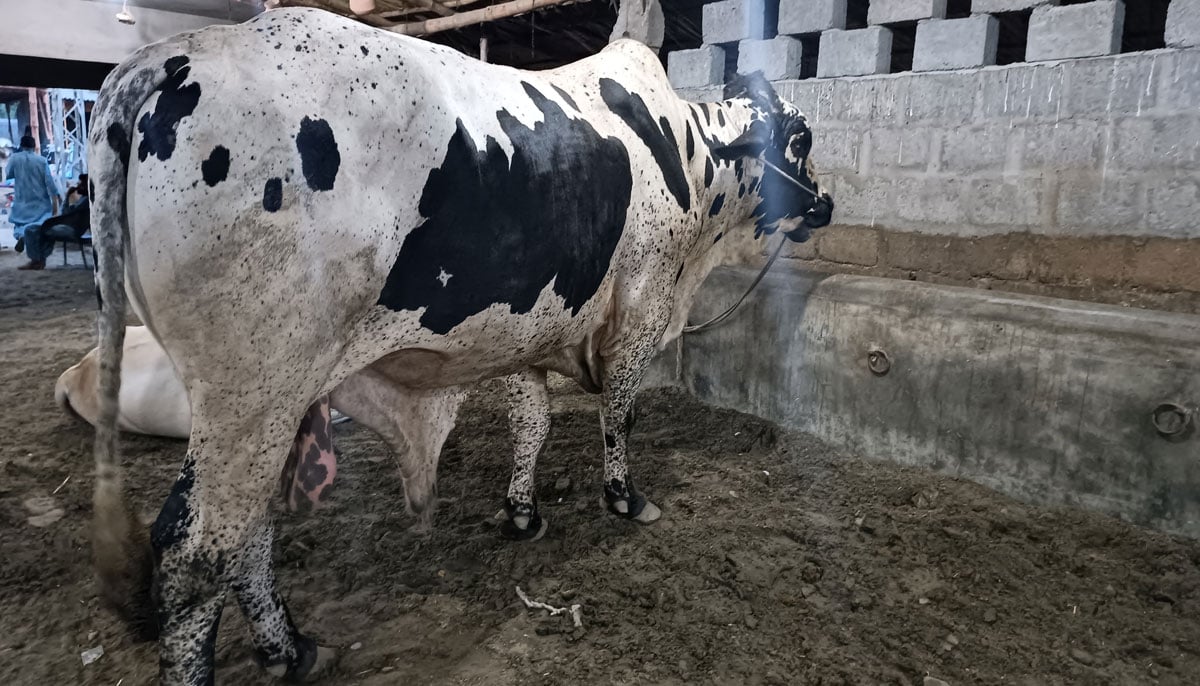
Khan noted that his animals were also bred with good care. He said the weight of his white Australian-cross-bred bull was 15 maunds, while of that of black, it was 17 maunds.
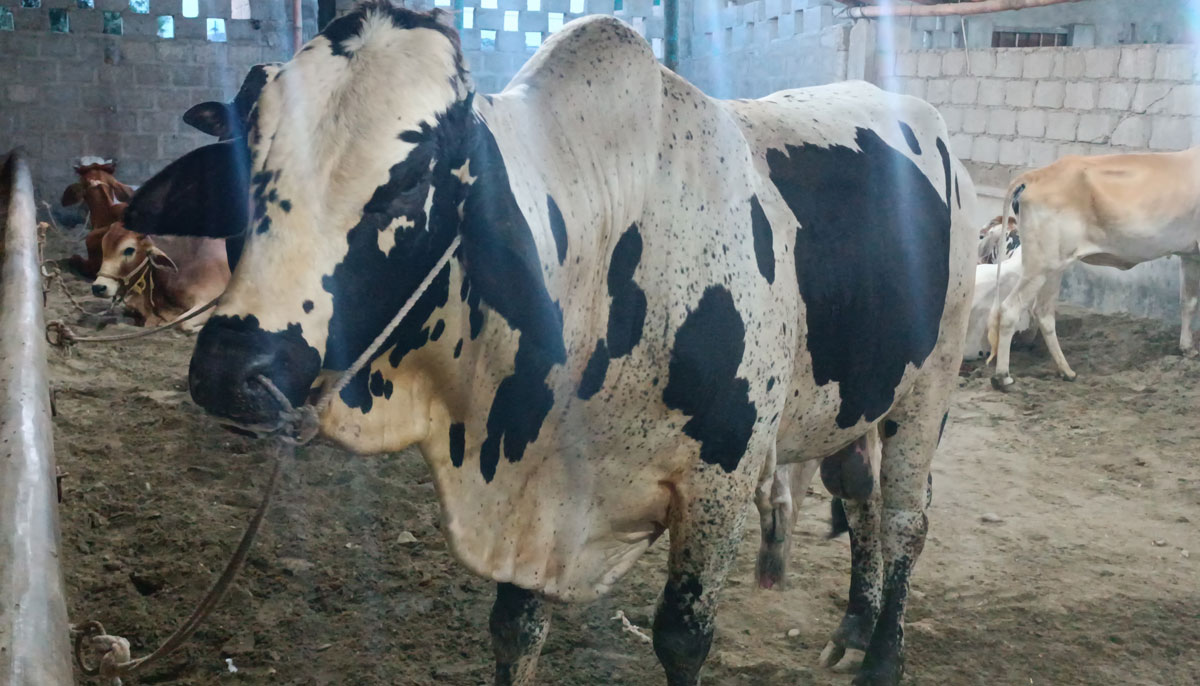
He also sa that his animals had six to eight teeth and were fully vaccinated.
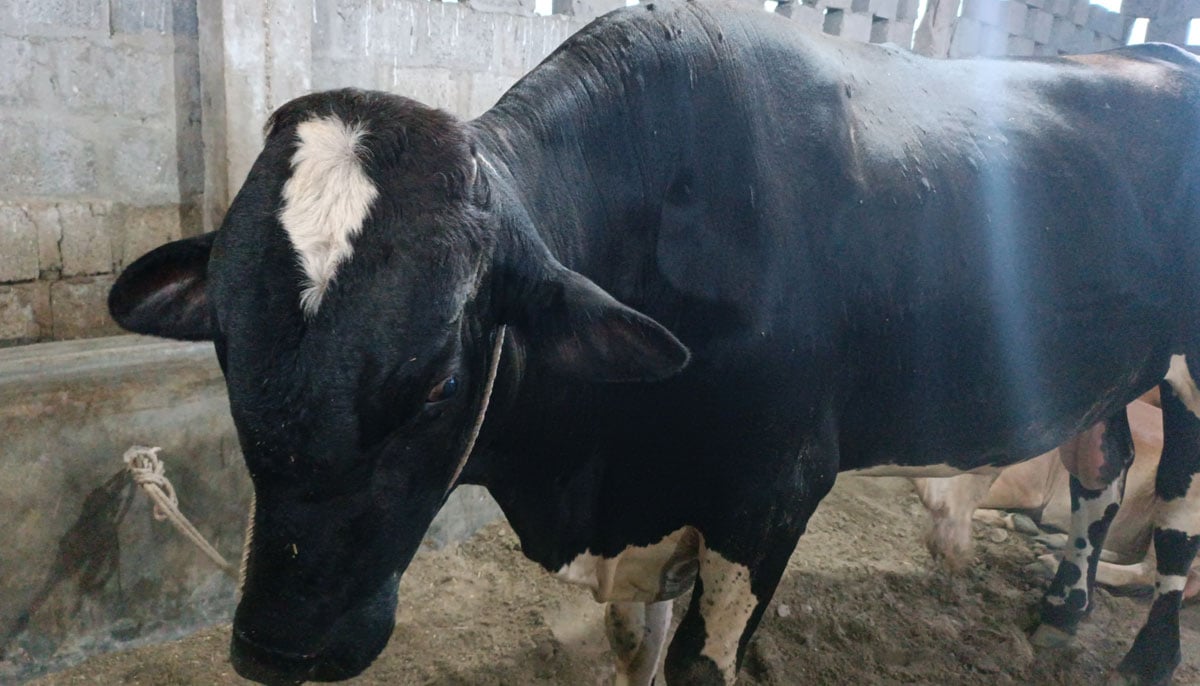
"We are not seeing many customers this time, yet the prices are at par with the inflation."
He further underlined that as the purchasing power of the people indubitably had decreased, the prices for animals were slightly higher than last year, which, according to him, was "just fine".
Khan said they feed their animals special fodder made from oil and sometimes ghee and they were also given dried fruits like almonds and cashews and a "special feed rich in growth nutrients."
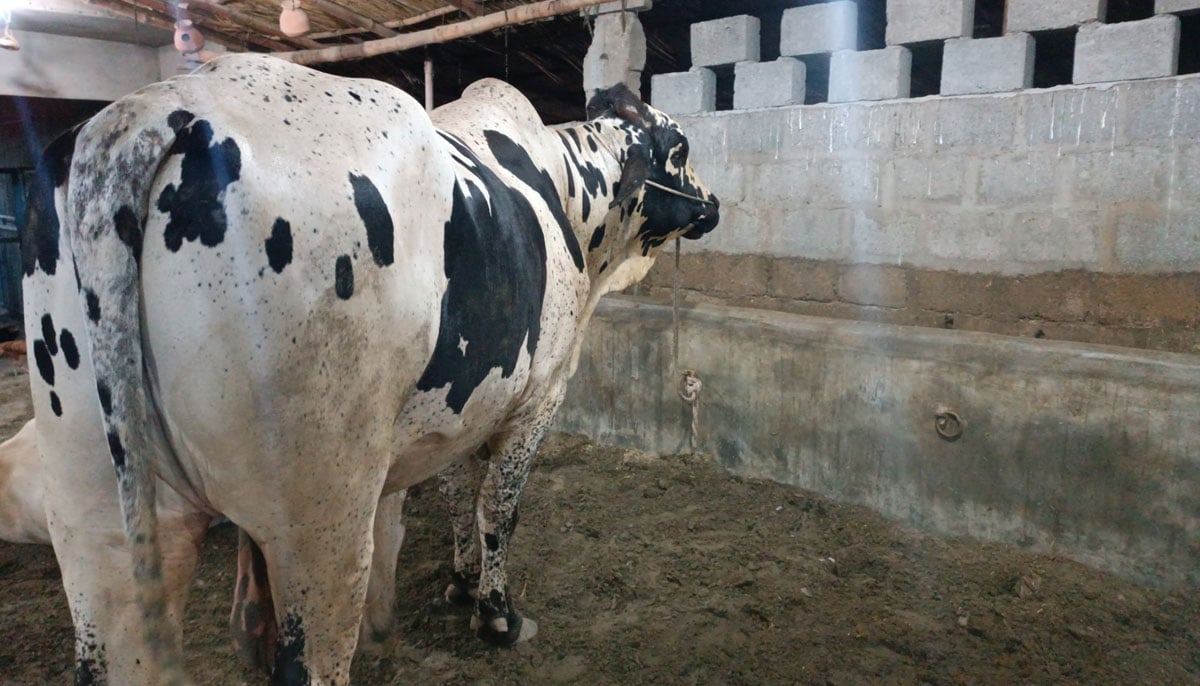
"The prices keep changing as Eid approaches. Some people lower their prices to sell their animals in haste, and some take them back to try their luck next year," Khan underlined.
Khan also blamed runaway inflation and high fuel prices for multiplying all the other costs, mainly transportation, impacting the cost of breeding animals.
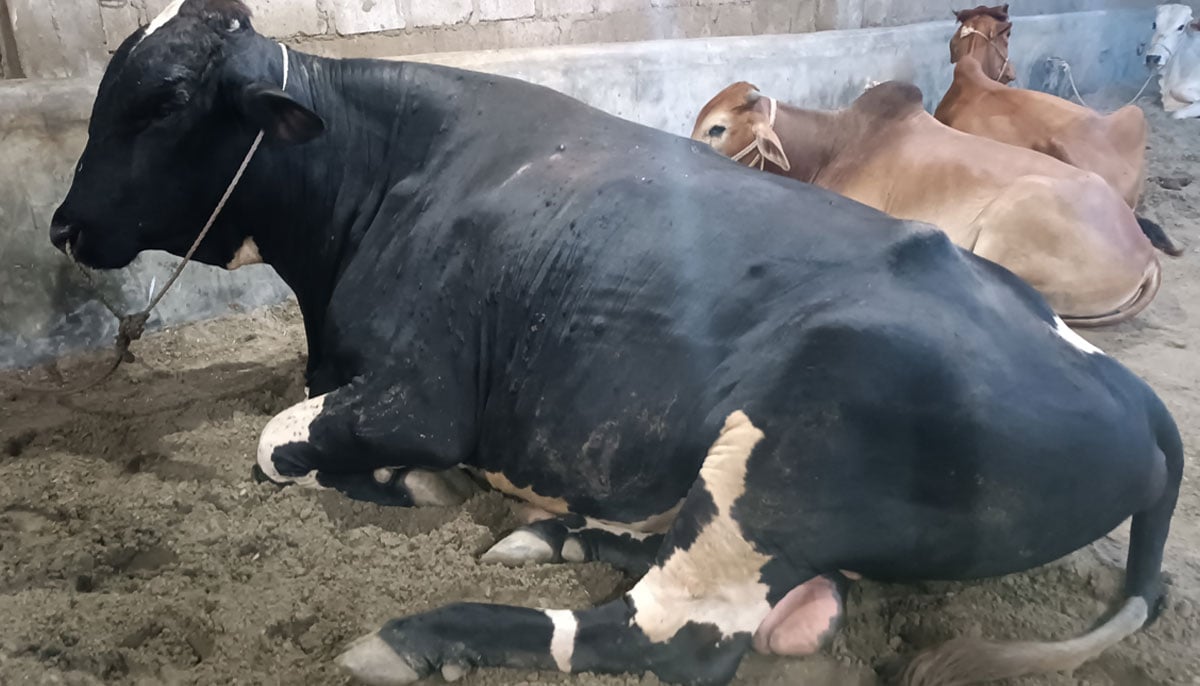
"There are more window shoppers in the market than buyers."
He also claimed that due to extreme flooding last year, many people from interior Sindh are bringing their animals to cities for sale as they had suffered heavy losses.
"This is also a factor behind high animal prices," he said.
Khan said that this time there would be more animals in the market than last year.
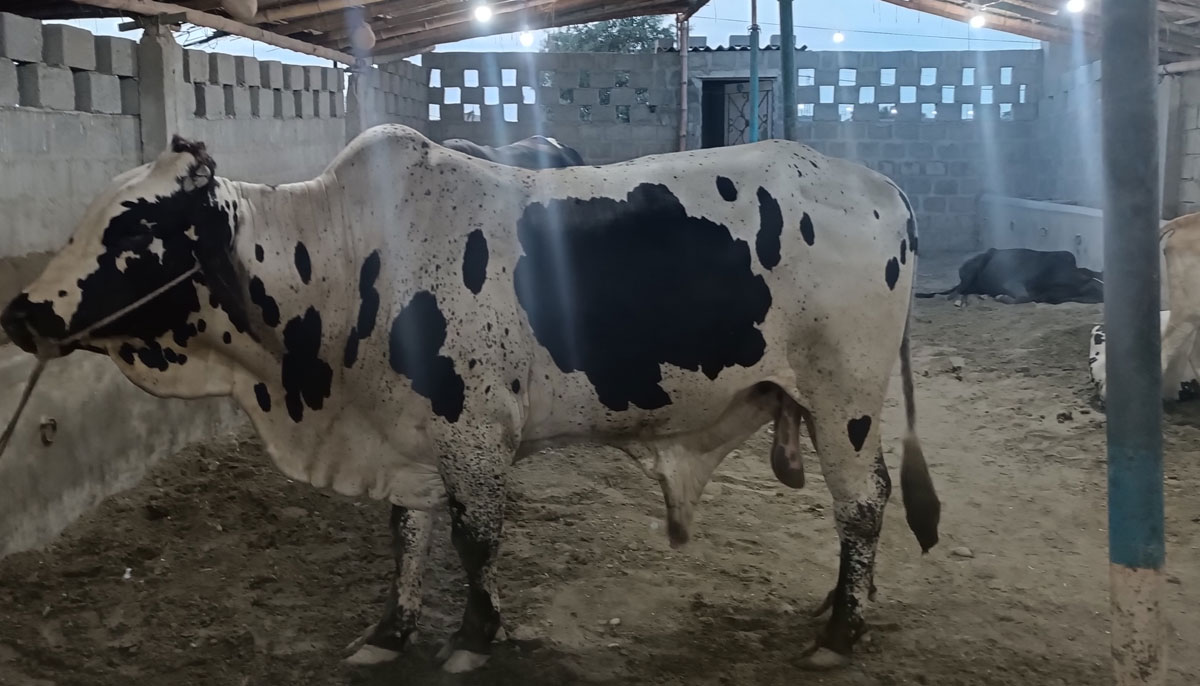
Geo.tv observed that despite sky-high prices and shrinking purchasing power people are showing up at the cattle markets to hunt good bargains so that they can take animals of their choice back home to their families.
However, the familiar sound of the cow bells in the streets and goats and sheep bleating that resonates through urban neighbourhoods during this time will be less common than last year.
This and other price hikes come at a time when most Pakistanis are putting up with the worst economic hardships in the history of the country.



